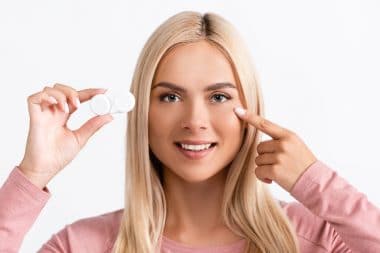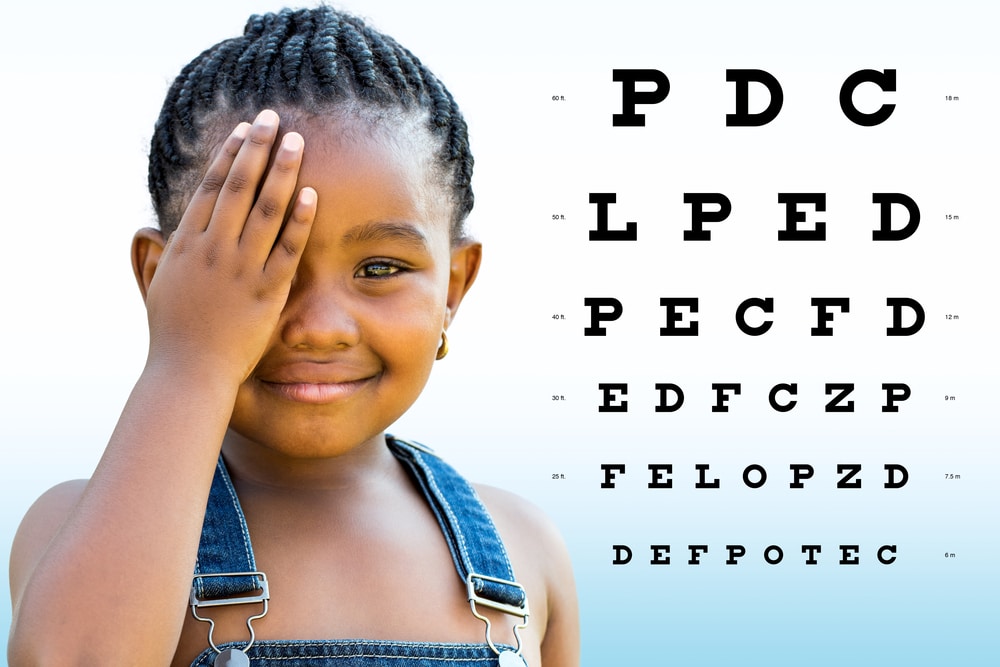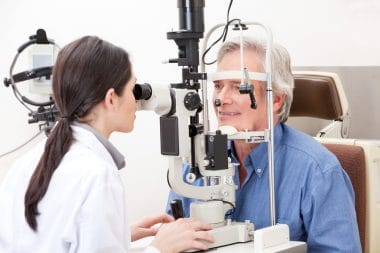1 out of every 4 school age children has some type of eye problem. So it is important that we know how to protect our eyes from harm and how to determine if our child might have a vision problem.

Many pediatricians will perform a simple eye exam around age 3. If they don”t offer this, ask. If he/she notices any problems get to a pediatric ophthalmologist.
Vision Problem Symptoms:
- Wandering eyes, or crossed eyes
- Clumsy or poor coordination when throwing or catching
- Sitting real close to the TV
- Excessive Blinking or Squinting
- Disinterest in reading
- Short attention span
- Trouble viewing distant objects or moves object very close to observe
Increase Vision Risk Factors:
- Prematurity or low birth weight
- Diabetic
- Family history of childhood vision problems
- Infection of mother during pregnancy
- Difficult labor, Low Apgar scores
Diabetic Recommendations:
If your child is diabetic you must pay particular attention to their eye health. Here are recommendations for keeping on top of things:
- Get a thorough eye exam yearly
- Control blood sugar
- Keep cholesterol and blood pressure checked
- Visit your eye doctor immediately if you or your child notices vision changes.
Safety Measures:
PROTECTION FROM THE SUN: Protect your eyes from the sun with sunglasses or a hat. Children are outside more often than adults and need protection from damaging UV rays. Make sure your child has sunglasses that offer UV protection, fit properly, shield the whole eye, and are impact resistant. If your child prefers a hat make sure it has a brim and offers good eye shade.
PROTECTION FROM SPORTS INJURIES: Make sure your child wears protective eye gear when playing sports. Regular glasses and sun glasses are not enough. If your child resists they will soon adjust to wearing sport goggles. You just need to make sure they fit properly. No sport is worth losing an eye over.
PROTECTION FROM FIREWORKS: Just leave fireworks and firecrackers to the professionals.
PROTECTION FROM TOYS: Make sure your child”s toys are age appropriate. Also check for any sharp protruding parts and make your child aware of them or discard the toy.
Foods that Benefit your Eyes:
Foods that are high in antioxidants, vitamins A, C, and E and the mineral Zinc are good for your eyes. These include foods such as:
Carrots
Oatmeal
Milk, Eggs, Cheese
Raisin Bran
Spinach, Kale, broccoli
Almonds, Peanuts, Pistachios
Dried Fruits: mango, peaches, apricots, strawberries, and cantaloupe








Reply